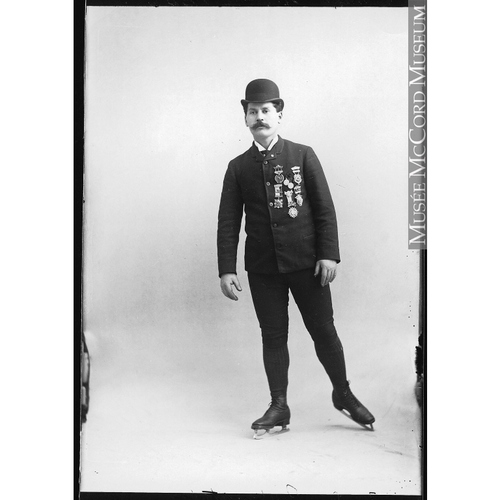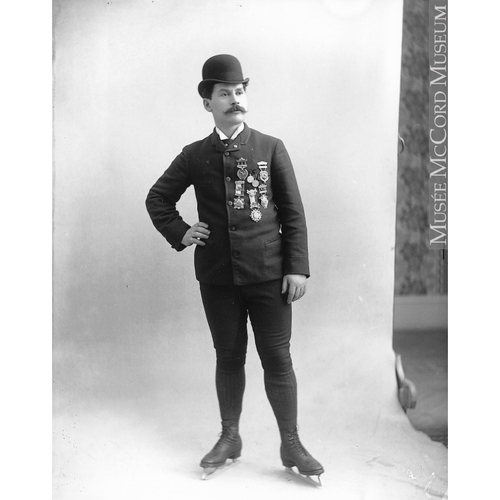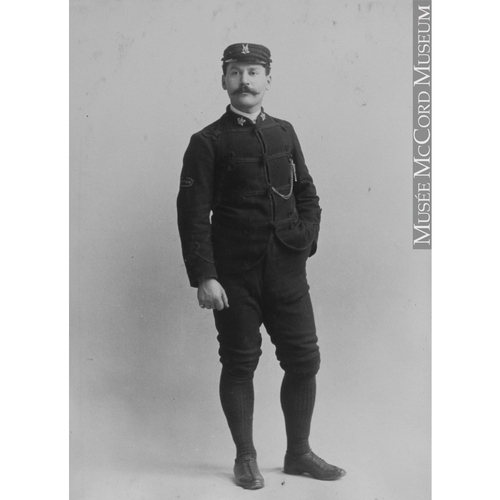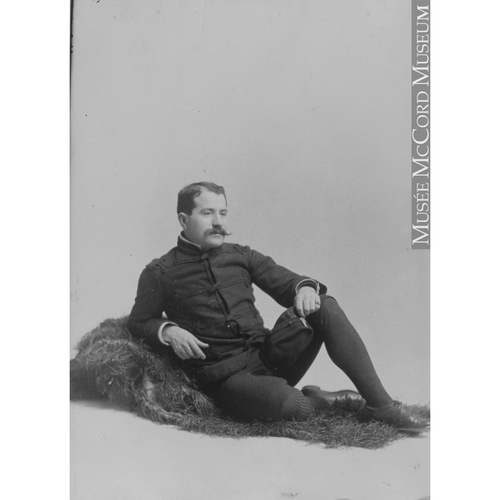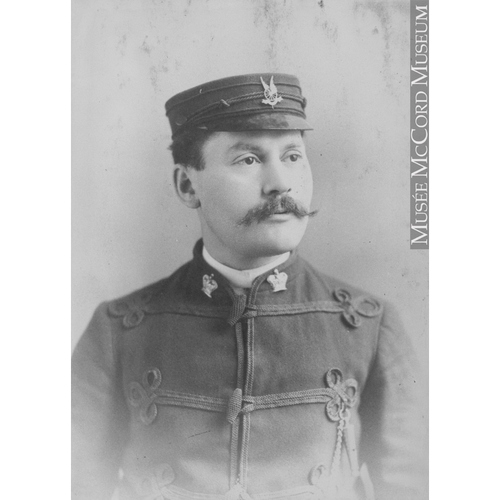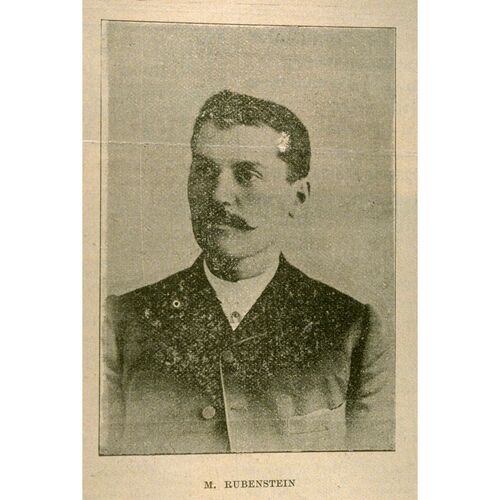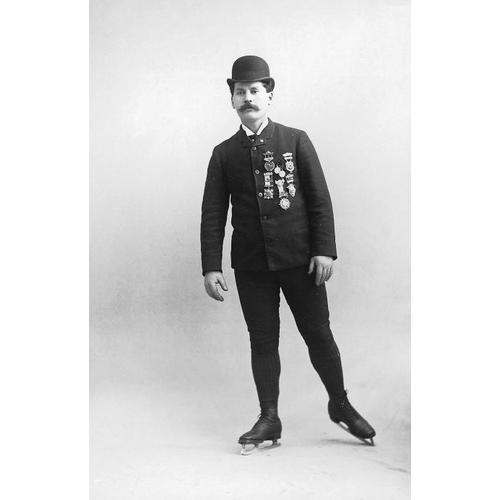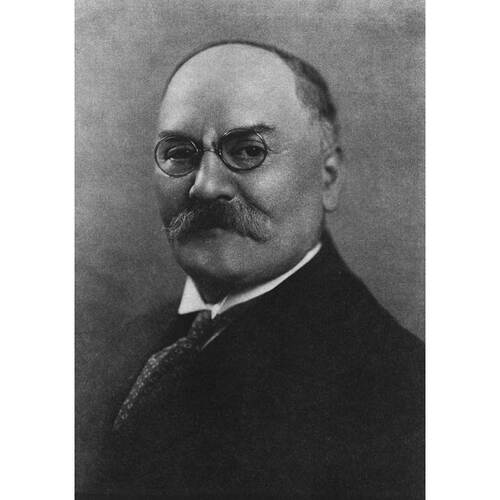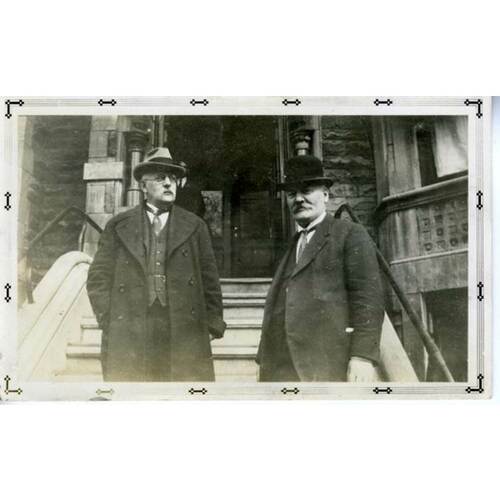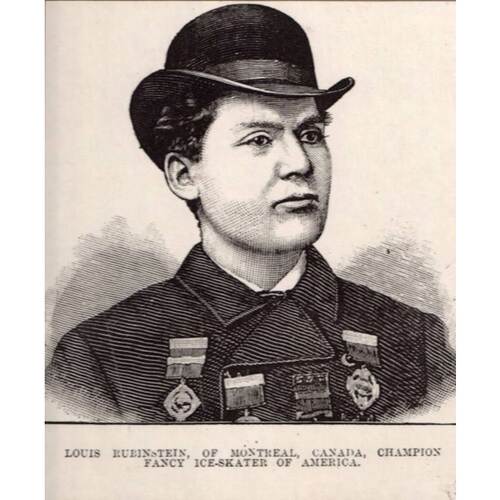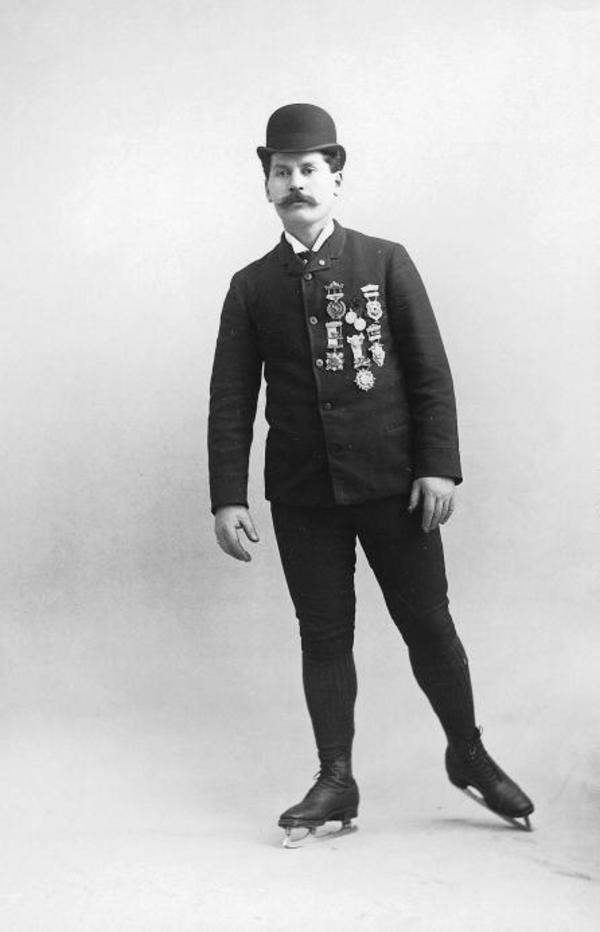
Source: Courtesy of Wikimedia Commons
RUBENSTEIN, Louis, athlete, entrepreneur, jp, and municipal councillor; b. between 1857 and 1868, probably in Montreal, son of Max Rubenstein, a glazier and carpenter, and Leah ———; d. unmarried 3 Jan. 1931 in Montreal and was buried there two days later in the cemetery of the Shearith Israel congregation.
The son of Polish immigrants of Jewish origin, Louis Rubenstein developed an interest in skating at an early age. One of the places he frequented most during his youth was the Victoria Skating Rink, built in Montreal in 1862. It was as a member of the Victoria Skating Club of Montreal that he learned the sport and then began to compete in figure skating. In 1878 he won his first event in Montreal. Around the beginning of the 1880s he became a partner in Rubenstein Brothers, the company founded by two of his brothers in 1864. The family business, which would be sold in 1929, engaged mainly in plating with metals such as nickel, silver, and gold.
The participation of Louis in Rubenstein Brothers evidently did not hurt his figure-skating performances. He was the Canadian champion from 1883 to 1890 and won the American championship in 1888 and 1889. His exactness in tracing figures on the ice and retracing them without making marks outside the original lines was remarkable.
In December 1889 the Amateur Skating Association of Canada chose Rubenstein to represent the country at the international figure-skating competition to be held in St Petersburg, Russia, the following February. The association charged a committee with taking up a collection so that he could go to the world championships. A sum of $400 was raised. On 2 Jan. 1890 Rubenstein left Montreal for New York, where he boarded a ship for Europe. Tsarist Russia was very anti-Semitic at the time. In the athlete’s luggage was a letter from the governor general of Canada, Lord Stanley*. In the event of a problem, Rubenstein was to give the letter to the British ambassador in St Petersburg, Sir Robert Burnett David Morier. When he reached Holland after a stopover in Ireland, he took the train to Berlin, where his friend William C. Hodgson, a former member of the Montreal Lacrosse Club, was waiting for him. He then travelled by rail to St Petersburg.
Shortly after his arrival Rubenstein ran into difficulty because of his Jewish origins. After handing over his passport to the clerk at the hotel, he had to meet with the local police, who immediately confined him to his lodgings and to the skating rink. A few days later he had to return to the police station, where he was ordered to leave Russia within 24 hours. He therefore went to the British Embassy and presented Lord Stanley’s letter. Morier issued a new document, which enabled Rubenstein to retrieve his passport and take part in the competition without encountering further problems. He was told in no uncertain terms, however, that he had to leave Russia as soon as the championship was over.
The competition was divided into three events. Rubenstein won the first two with the best figures on the ice, but he withdrew from the third event, the freestyle, in which the contestants had to perform jumps and skating steps that, in his opinion, bore no relationship to figure skating. He nevertheless won the championship on overall points, beating skaters from Austria, Sweden, Norway, Finland, and Russia. He retired from figure skating in 1892. An accomplished athlete, he was a pioneer of this sport in Canada and enriched it with two figures: the Rubenstein Star and the Maltese Cross.
Figure skating was not the only sport in which Rubenstein excelled. In 1882 he had joined the Montreal Bicycle Club, thereby becoming a member of the Montreal Amateur Athletic Association, which the year before had brought together the Montreal Bicycle Club, the Montreal Lacrosse Club, and the Montreal Snow Shoe Club. He would be president of the association from 1913 to 1915. From 1899 he was president of the Canadian Wheelmen’s Association, for which he had previously acted as a competition official and a member of the board of directors. That year Rubenstein succeeded in bringing the world cycling championship to Montreal. His penny-farthing – a bicycle with a large front wheel and a small rear one – would still be found at the beginning of the 21st century at the Château Ramezay in that city. He also curled, played billiards, and bowled, and was president of the Canadian bowling association from 1895. The same year he was appointed honorary secretary-treasurer of the Amateur Skating Association of Canada, and he was the head of the world speed-skating championship held in Montreal in 1897. In 1907 Rubenstein helped promote the creation of the International Skating Union of America, which represented Canada and the United States; he was its president in 1909. He also belonged to the Young Men’s Hebrew Association, the Jewish variant of the Young Men’s Christian Association, and to the Montreal branch of the Royal Life Saving Society.
In 1897 Rubenstein had been appointed a justice of the peace for the district of Montreal. In 1914 he was elected alderman for Saint-Laurent Ward, an office he would hold until his death in 1931. As an alderman, in April 1922 he became president of the new Athletic Commission of Montreal, established after the Act respecting the creation of athletic commissions by certain municipalities had received royal assent on 22 March. He remained president until 1930. Alderman Joseph Allan Bray was the sponsor of the commission, which aimed to regulate professional boxing and wrestling in the city. The other members of the body, appointed for a two-year term, were aldermen Alfred Richard, Joseph-Maurice Gabias, Georges Vandelac, and Bray. The sports journalist Elmer Ferguson, who was not an elected municipal official, was named the commission’s secretary. Of particular note among Rubenstein’s achievements in the municipal arena were the inauguration of public baths in 1916 and the introduction of a women’s swimming and lifesaving championship in 1921.
After Rubenstein’s death in January 1931, which closely followed those of his brothers Israel, Jacob, and Lazarus between 21 May and 25 June 1930, several of his former colleagues and friends asked the City of Montreal to commemorate him. In the end, on 10 May 1938, the municipal council resolved to erect a fountain in his honour at the corner of Avenue Park and Avenue Mont-Royal Ouest. It was dedicated a year later. In 1955 Rubenstein was inducted as a figure skater into Canada’s Sports Hall of Fame. The house on Rue Saint-Urbain in which he lived for most of his life with his brothers and sisters was declared a historic monument in 1990.
Louis Rubenstein was an athlete who overcame the handicap of racism. He was also a committed sports administrator. His Jewish origins did not prevent him from winning renown in the sporting world of the 19th century and from being active in municipal politics in the century that followed.
Despite extensive research, the birthdate of Louis Rubenstein could not be confirmed. During this investigation, the sources consulted included the following censuses at LAC: Census returns for the 1911 Canadian census, Que., dist. Montreal (182), subdist. St Lawrence Ward (11): 34; R233-34-0, Que., dist. Montreal West (106), subdist. St Lawrence Ward (C): 96; R233-35-2, Que., dist. Montreal (90), subdist. St Lawrence Ward (I): 75; R233-36-4, Que., dist. Montreal Centre (172), subdist. St Lawrence Ward (68): 16–17; R233-37-6, Que., dist. Montreal (177), subdist. St Lawrence Ward (A): 10. Also consulted were FD, United Church, Jewish-Spanish-Portuguese (Montreal), 5 Jan. 1931; Le Devoir, 5 janv. 1931; and Ville de Montréal, “Old Montréal”: www.vieux.montreal.qc.ca (consulted 9 March 2012).
BANQ-CAM, CE601-S97, 10 Nov. 1875, 21 June 1892. The Canadian Jewish Heritage Network: www.cjhn.ca/en (consulted 29 Feb. 2012). LAC, R174-49-3. VM-SA, VM1 (fonds du Conseil de ville), S3 (dossiers décisionnels, 3e sér.), D115.12966; D433.57389; VM6 (fonds du Service du greffe), S5, SS3 (coll. des dossiers de coupures de presse), D16.775; D1982.8; D3020.73. Gazette (Montreal), 3 Jan., 14 Feb., 14, 15 March 1890; 26 June 1930. Montreal Daily Star, 6 Feb., 12 Dec. 1895; 14 Feb. 1899. Montreal Herald, 21 Dec. 1889. Canadian men and women of the time (Morgan; 1912). Élise Detellier, “‘They always remain girls’: la re/production des rapports de genre dans les sports féminins au Québec, 1919–1961” (thèse de phd, univ. de Montréal, 2011), 215–16. The Jew in Canada: a complete record of Canadian Jewry from the days of the French régime to the present time, comp. A. D. Hart (Toronto and Montreal, 1926). Don Morrow, A sporting evolution: the Montreal Amateur Athletic Association, 1881–1981 ([Montreal?], 1981). Prominent people of the province of Quebec, 1923–24 (Montreal, n.d.). Danny Rosenberg et al., “A quiet contribution: Louis Rubenstein,” Canadian Journal of Hist. of Sport (Windsor, Ont.), 13 (1982), no.1: 1–17. “The Rubenstein saga,” “Y” Beacon (Montreal), 26 (1950), no.43: 4; no.44: 3. Who’s who and why, 1914. S. F. Wise and Douglas Fisher, Canada’s sporting heroes (Don Mills [Toronto], 1974).
Cite This Article
Michel Vigneault, “RUBENSTEIN, LOUIS,” in Dictionary of Canadian Biography, vol. 16, University of Toronto/Université Laval, 2003–, accessed April 14, 2025, https://www.biographi.ca/en/bio/rubenstein_louis_16E.html.
The citation above shows the format for footnotes and endnotes according to the Chicago manual of style (16th edition). Information to be used in other citation formats:
| Permalink: | https://www.biographi.ca/en/bio/rubenstein_louis_16E.html |
| Author of Article: | Michel Vigneault |
| Title of Article: | RUBENSTEIN, LOUIS |
| Publication Name: | Dictionary of Canadian Biography, vol. 16 |
| Publisher: | University of Toronto/Université Laval |
| Year of revision: | 2019 |
| Access Date: | April 14, 2025 |


